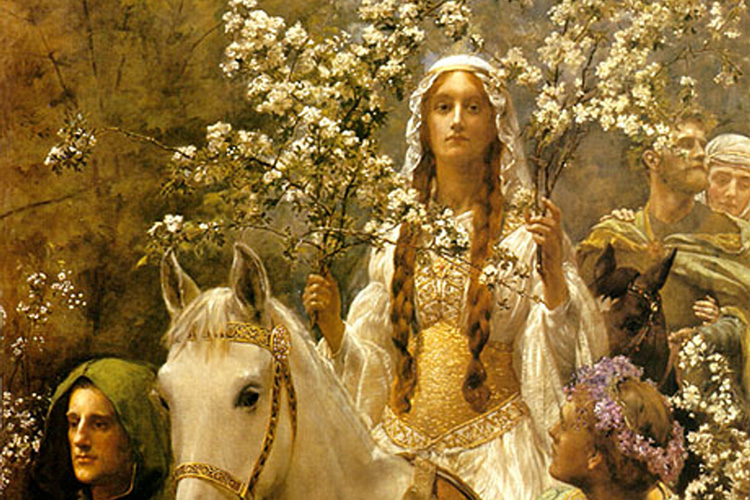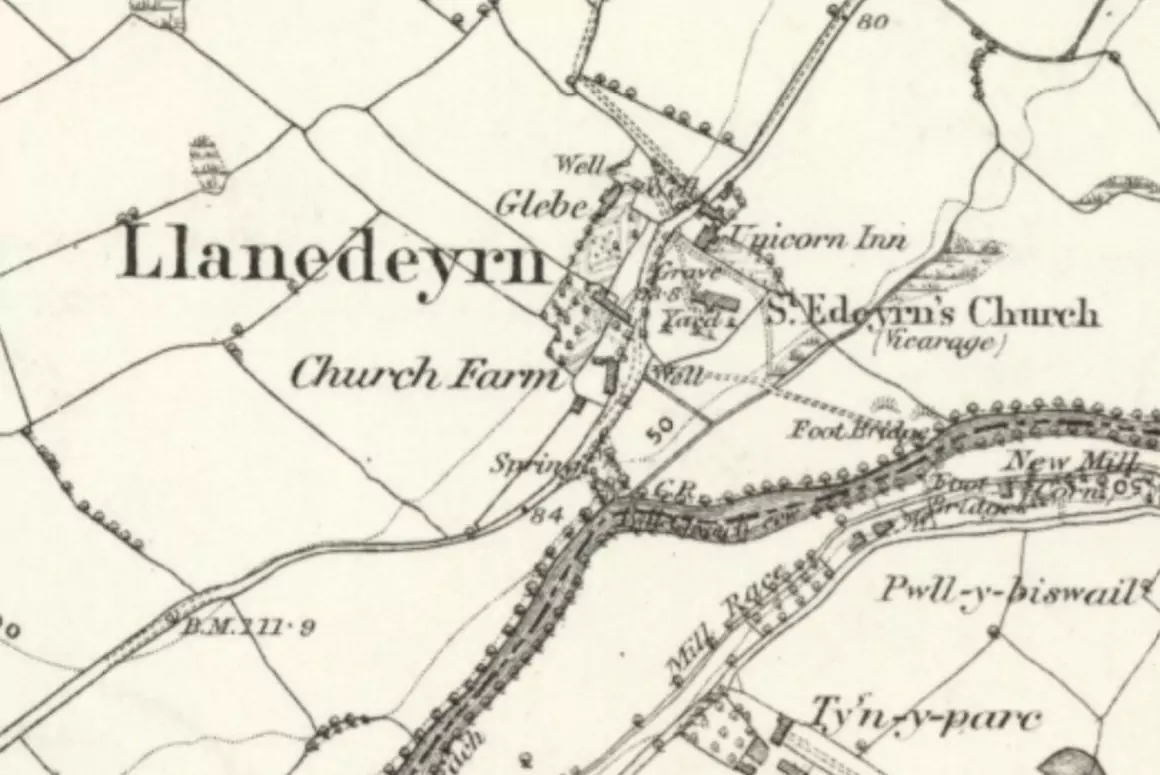![]()
Everyone is familiar with the Legend of King Arthur, which is a fictitious story that was concocted by the first great French novelist called Chrétien de Troyes in about 1165, who unscrupulously distorted the facts with his ‘poetic licence’ and modified the names of the characters and places to suit his Frankish audience too.¹ He even invented characters such as Sir Lancelot! His tale became very popular to such an extent that it circulated around the Holy Roman Empire (where Burgundy, Germany and northern Italy are situated nowadays) for several centuries and it became ever more fantastic as other authors embroidered it. The most elaborate synthesis of these myths is the so-called Heidelberg Manuscript. ‘King Arthur’ was transformed over the course of time into a chivalrous Christian knight who belted around the Mediterranean searching for the Holy Grail while encountering various natural and supernatural hazards on the way, rather like a latterday Odysseus.
Chrétien based his novel on a book that was a genuine history which had been written six centuries beforehand by the Romano-British priest and monk called Saint Gildas. Gildas was a son of Ceidio, King of Rheged, which was a kingdom in the Romano-British region that covered modern Cumbria and southern Strathclyde. Gildas moved to Caerleon (Camelot) – probably his father sent him there – and he was educated by Saint Illtyd at his monastic college in Llanilltyd Fawr (Llantwit Major) on the coast of South Wales.
Gildas had become a prominent priest in Caerleon and he subsequently witnessed the important historical events at first hand there: his detailed and undoubtedly impeccably accurate historical record – it was a mortal sin for any priest to lie – was bought in the form of a book² by Walter de Mapes (who was indeed a Welshman despite his Franco-Germanic name) in Brittany around 1160 during one of his trips to France as Henry II’s ambassador (Brittany was a separate country at that time). Walter could not fully understand the text because the Welsh and Breton languages had changed considerably and also diverged greatly from each other since it was written but he did recognize its importance, so he gave the book (or perhaps a copy of it) to his learned friend Gruffydd ap Athrwys (Geoffrey of Monmouth in English) to translate it into Latin for him, which was the ‘lingua franca’ of cultivated circles in those days. Gruffydd’s surname of ‘ap Athrwys’ clearly indicates that he was a descendent of Athrwys ap Gwythr’s dynasty (see below). Walter passed on the translated copy to Chrétien during one of his trips to the French court in Paris (Troyes lies 90 miles south-east of Paris and it could be easily reached by horseback or coach within a day). Walter might indeed have re-translated the book into French before giving it to Chrétien because he had studied at the University of Paris and therefore spoke French fluently.
By the way, King Ceidio was succeeded by another one of his sons, namely Gwenddoleu ap Ceidio, who was encouraged by his court bard and advisor, a Welshman called Myrddin (Chrétien’s ‘Merlin’) from Carmarthen, to go to war against Rhydderch Hael, King of Alt Clut. Unfortunately, Gwenddoleu was defeated and killed by Rhydderch’s army – bolstered by Pictish and Scottish troops – at the Battle of Arfderydd in 573 A.D, near Hadrian’s Wall. Myrddin went mad after seeing his leader fall in battle and he only managed to saved his own life by escaping into the Forest of Celyddon, where he apparently stayed until his death; his nickname was Myrddin of the Forest. Rhydderch then proceeded to destroy the kingdom of Rheged.
Let’s take a look at the facts: first briefly and then in detail. This description is based on my own independent research of the surviving original records that were written in Welsh and Latin. It has nothing to do with the half-baked essays that were written by Victorian, later and contemporary historians.
‘King Arthur’³ was a Romanized Briton called Brenin Athrwys (King Bear Man). He was the eldest son of Gwythr Pen y Dragon⁴ (Uther Pendragon in English), which signifies ‘Victorius Chieftain’ and he was the king of the fierce Silurian tribe that lived in South Wales: this tribe was the most important and loyal ally of the Romans in western Britain. Athrwys was born in 480 A.D., give or take a couple of years. His second wife (Welsh law permitted a man to have 2 wives simultaneously) was a Cornish woman called Gwenhwyfar⁵ (Chrétien changed her name to Guenièvre in French: this became Guinevere in English), which means ‘Blessed among others’, whom he married in about 510 A.D. when she was exactly 15 years old. It is important to note that Gwenhwyfar is a uniquely Cornish name (the English version of it is Jennifer). He met her at the court of his best friend King Cadwyr⁵ of Cornwall in his fortified capital of Din Dagel (which means ‘fortress with the narrow entrance’ in Welsh; known as Tintagel in English) where she had been safeguarded as a little girl following the murder of her parents by Saxons, i.e., she was literally a ward of court. Gwenhwyfar was astonishingly beautiful and very intelligent, which earned her the nickname of ‘White Enchantress’ later on in Caerleon.
However, I believe that Gwenhwyfar’s beauty masked a callous and scheming character! Athrwys already had two sons by his first marriage who were the elder Gwydre and the younger Llacheu (Lacholt in English). The name of Athrwys’ first wife has not survived the passage of time but she was probably a Cornish woman, as were Athrwys’ own mother and stepmother too). I am basing the following conjecture on three apparently unrelated and undated facts. Firstly, Llacheu’s elder brother Gwydre was killed along with two of his attendants while out hunting an enormous boar which gored them (I estimate that this happened around 523 A.D. when he was about 22 years old). Secondly, Athrwys killed his only son with Gwenhwyfar, whose name was Amhar (Amir in English). Thirdly, Gwenhwyfar ‘took the viel’.

The scene was set: Llacheu became the next in line to the throne after Gwydre’s death. Gwenhwyfar bided her time until Amhar came of age (he had been born in about 510 A.D.), then she convinced him to kill Llacheu in such a way that the latter’s demise would appear to be yet another unfortunate accident, in order to ensure that her son would eventually become the next king (naturally with Gwenhwyfar pulling the strings) after Athrwys eventually died (he was about 20 years older than her) but Athrwys foiled the plot and killed Amhar instead. Athrwys then spared Gwenhwyfar by banishing her to the convent of Saint Julius’ Church where she could eternally repent.
Athrwys became the first king of Caerleon in 527 A.D., which was 15 years or so after he had married Gwenhwyfar and he reigned for exactly 10 years. He was buried in 537 A.D. within the Welsh pagan religious centre that was located on the largest of three islands in the nearby tributory of the River Usk called Afon Lwyd (Avalon).
References
- Chrétien de Troyes’ 5 novels mentioning King Arthur: Perceval (Le Conte du Graal), Yvain (Le Chevalier au lion), Lancelot (Le Chevalier à la charrette), Erec and Cligès. His real name was Crestien (Chrétien is Modern French) and he was the poet cum composer at the court of Duke Henry I ‘The Liberal’ of Champagne, which was a separate country, who married Princess Marie of France (one of King Louis VII’s daughters), who then became the Duchess.
- The (now lost?*) chronicle in the form of a book that Walter de Mapes bought in Brittany, which is mentoned in the dedication that Gruffydd ap Athrwys (Geoffrey of Monmouth) wrote at the beginning of his Historia Regum Britanniae.
- The Black Book of Carmarthen, the Red Book of Hergest and the White Book of Rhydderch, as well as the collection of exagerated legends known as the Mabinogion that is based on them. The two stories in the Mabinogion (which should actually be called ‘Mabinogi’ by the way!) that mention ‘King Arthur’ are Culhwch and Olwen and the Dream of Rhonabwy, both of which were translated by Lady Charlotte Guest and published in 1840. Old poems written in Archaic Welsh (then rewitten from 8th century onwards in Middle Welsh).
- Historia Regum Britanniae (originally entitled De Gestis Britonum) by Gruffydd ap Athrwys (Geoffrey of Monmouth) around 1160 (not in 1136 or 1138 as commonly thought!).
- Old Welsh poems mentioning Cadwys, to which Gruffydd ap Athrwys (Geoffrey of Monmouth) referred when writing his Historia Regum Britanniae centuries later.
© John H. Griffith-Davies, 2020.
All images used are generic and relate to the many fictional tales of King Arthur.





